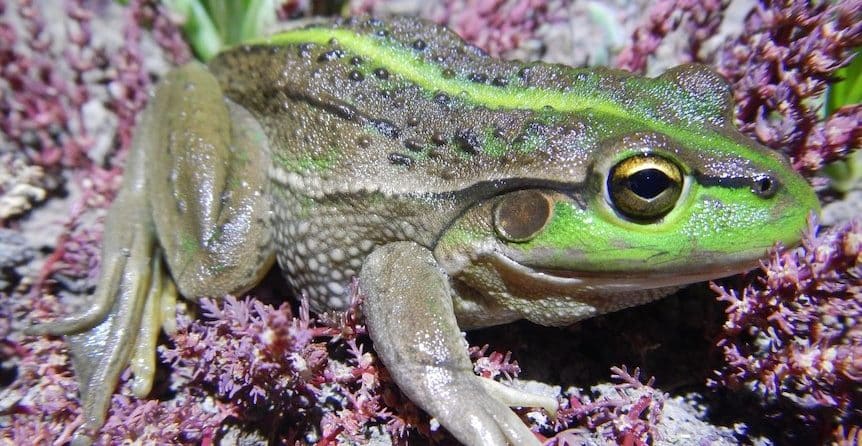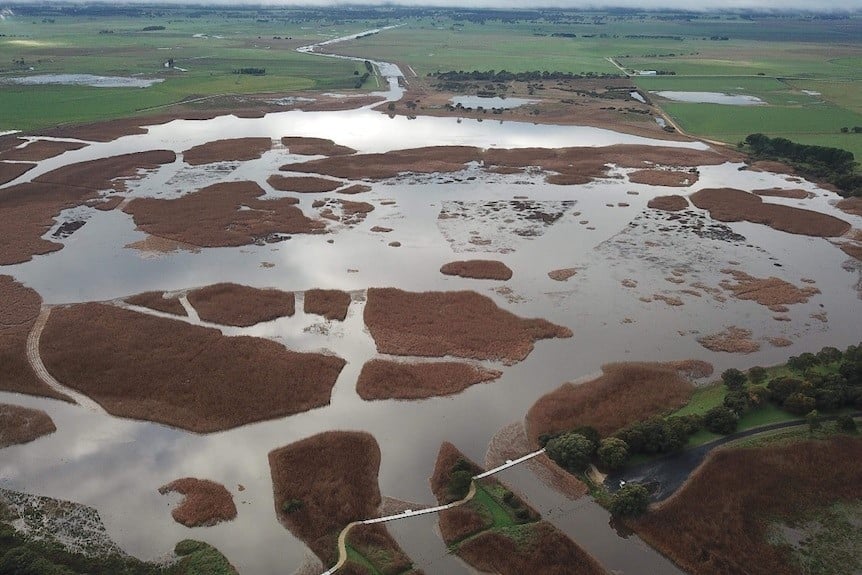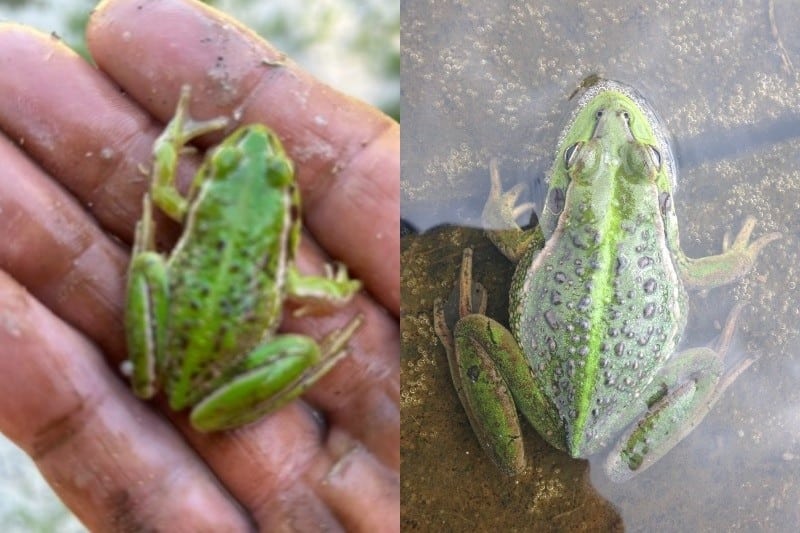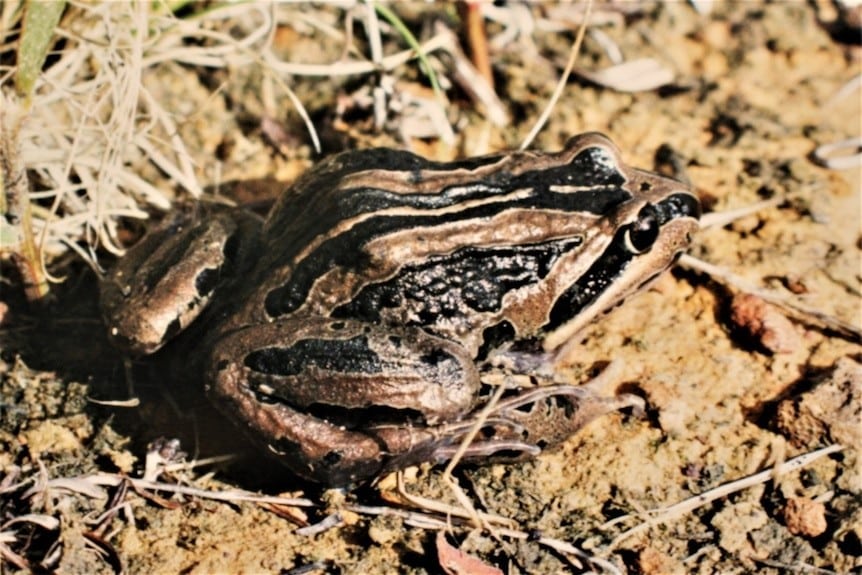Hundreds of frogs die at Bool Lagoon near Naracoorte in suspected chytrid fungus outbreak
Hundreds of frogs have died at a lagoon near Naracoorte in what the South Australian Department for Environment and Water (DEW) is calling a mass frog mortality event.
Hundreds of southern bell and striped marsh frogs have died at Bool Lagoon Game Reserve and Hacks Lagoon Conservation Park in the state’s south-east.
Testing is underway to determine if the deaths involve the chytrid fungus, which has wiped out whole species of frogs in Australia and overseas.
Southern bell frogs are considered to be endangered species.
The Bool Lagoon campground and walks at Hacks-Bool Peninsula will be closed until Thursday, while the department investigates.
DEW principal ecologist Karl Hillyard said it was “an unusual event”.
“The deaths are believed to involve the chytrid fungus,” Dr Hillyard said.
“However, further testing is underway to investigate other possible causes.
“A sample of dead frogs has been collected for laboratory testing and the results are being analysed by department staff and frog experts.”
Chytridiomycosis is an infectious disease caused by the chytrid fungus and is blamed for wiping out more than a third of the world’s frog species.
It is a type of fungus that spreads infection by releasing small bodies known as “zoospores”.
It gets into the skin of frogs, disrupting the flow of electrolytes and eventually giving them a heart attack.
Frog deaths reducing after closure
Bool Lagoon is one of the largest fresh¬wa¬ter lagoon sys¬tems in south¬ern Aus¬tralia and is popular among birdwatchers, especially when full of water.
The closure of the campground and paths will be reviewed later in the week.
The deaths were first noticed by authorities in mid-July
“Our regular monitoring at the site indicates the number of frog deaths has been reducing each week,” Dr Hillyard said.
“There remains evidence of active frog populations, which is a good sign.”
Similar mass mortality events have struck New South Wales, Victoria and Queensland over the past two years, although chytrid did not appear to be the sole reason for the deaths.
While acknowledging that investigations were still underway into the deaths at Bool Lagoon, frog ecologist Rupert Mathwin said the mortality event was concerning, as South Australia was normally considered too hot for the chytrid fungus.
“The fact that this is occurring now in South Australia, and also a little bit later than winter, it’s an unusual thing and it’s not ideal,” he said.













